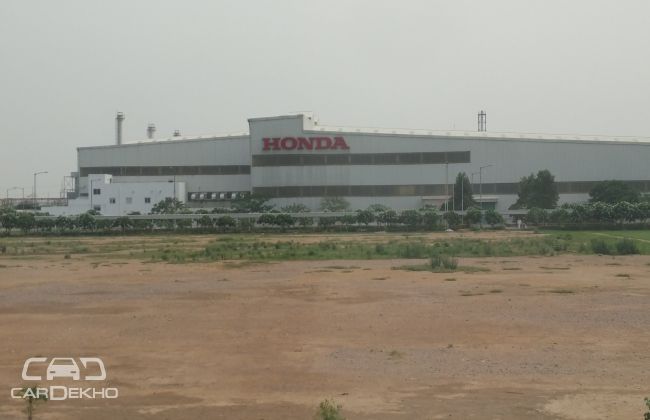How Your Honda Takes Shape – A Visit To Tapukara Plant
Modified On Jul 04, 2017 07:30 PM By Khan Mohd.
- Write a comment

Adjacent to the National Highway 25 that passes through the Alwar district in Rajasthan lies Honda Car India’s Tapukara plant. Spread over an area of 400 acres, it is the Japanese carmaker’s largest facility for manufacturing manual transmissions in the world. Having started its operations in 2008, the Tapukara plant was initially used to manufacture body panels and engine components before moving on to full-scale car production in 2014. Honda’s latest crossover, the WRV, is built here alongside the Honda City, Jazz and the BR-V.
With an investment of Rs 5,441 crores, the Tapukara plant rolls out 1.8 lakh engines every year. While Honda’s mantra when it comes to its cars is ‘Man Maximum, Machine Minimum’, it’s the opposite that holds true when it comes to manufacturing them. Top-of-the-line, hi-tech robots are employed in almost all sections of the facility which ensure the chances of an error are reduced to almost nil.
FE - Ferrous Engineering

If the powertrain production line is the root of the facility, the FE or Ferrous Engineering sub-facility is where Honda plants its seeds. Furnaces heat the metal to near melting temperatures to help make it malleable enough to be moulded into the desired shape. The connecting rods, crankshafts and other engine parts are all forged here. It’s a 10-step process with each step taking a mere 9 seconds, except for the cooling section which requires 45-50 minutes.
Powertrain

A total of 18 robots work in various sub-divisions at the powertrain facility. With forging, die-casting and engine assembly all under one roof, Honda is self-sufficient in manufacturing child parts of the engine like the cylinder heads, crankshafts and connecting rods among others.

With such an ingenious facility, the Tapukara plant is one of the most competent units for the carmaker across the globe. After going through all the quality checks, the final product is subjected to test runs on a test track to check for its efficiency on the road and to detect other defects. This test is not confined to random models, it’s done for every single model which rolls off the assembly line.

Localisation of about 90 per cent of the parts helps Honda keep its production costs in check and price their cars as close to the competition as possible. The facility churns out 490 cars on a daily basis with an approximate turnaround time of 20 cars per hour.
Body Stamping

The body stamping area is a sight to behold. Pressing machines as high as a truck and weighing close to 1,300 tonnes press all the body panels into shape here. Body parts like the fender and the roof are pressed into shape here before heading over to weld shop where all the parts are put together.

Chassis Build

The floor pan or the platform forms the foundation of the car and starts its journey on the conveyor belt acquiring other panels over the course of its assembly before being completely pieced together and put to test as a whole ‘unit’ on the test track. Workers along the assembly line fix exterior panels and interior bits like the seats, dashboard and carpets. All the while, the chassis continues to moves on the conveyor belt.
Conveyor Belts

The conveyor belts can be termed as the backbone of this whole car manufacturing process and it’s because of them, the complete process of assembling the final product is accomplished within a stipulated time without any compromise on accuracy or precision.
Capacity

The annual production capacity of both the Honda plants – Tapukara and Greater Noida - is the same at 1,20,000 units. However, the Rajasthan plant’s capacity can be scaled to 1,80,000 units if required.
Exports At A Glance
Honda India’s total annual business of Rs 1,140 crore from exporting components in the 2016-17 fiscal. Compared to the FY 2015, it’s a massive hike of 157 percent. Among components being shipped abroad are crankshafts, connecting rods, forging dies, cylinder heads, cylinder blocks, transmissions, spin casting and other outsourced parts from vendors. Honda exports them to 15 countries, including Japan, Thailand, Malaysia, Indonesia, Philippines, Taiwan, Vietnam, UK, Brazil, Mexico, Argentina, USA, Canada, China and Turkey.

With respect to cars, Honda currently exports the Brio, Amaze, BR-V, Jazz and the City to similar markets as ours from both its plants. The nations importing these Honda cars include South Africa, Tunisia, Seychelles, Mauritius, Nepal, Bhutan and Sri Lanka. Honda Cars India managed to ship 5,824 units in the last financial year.















